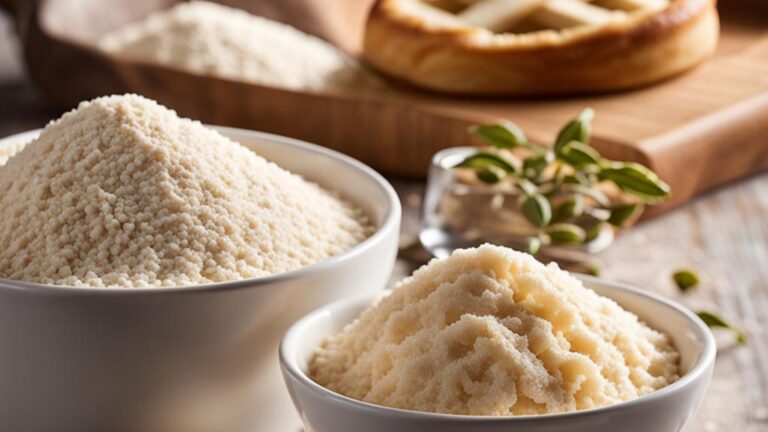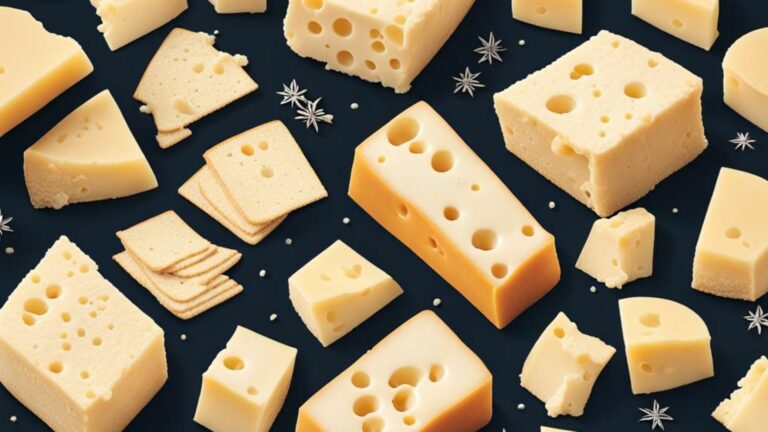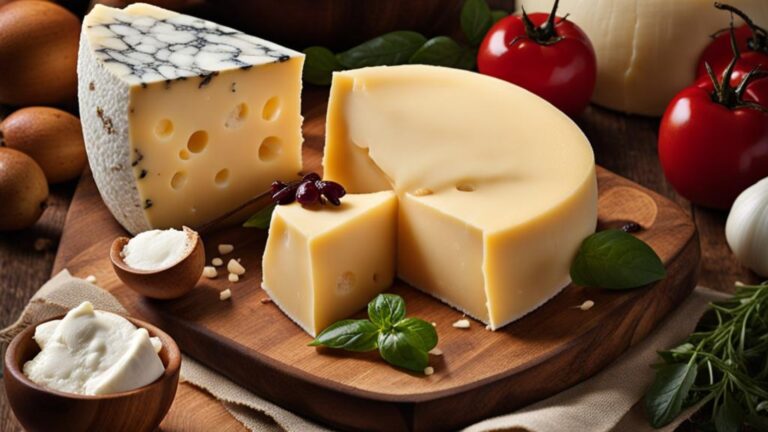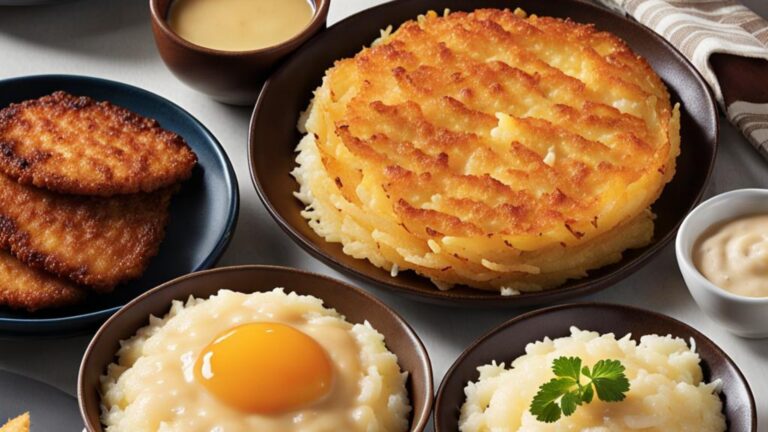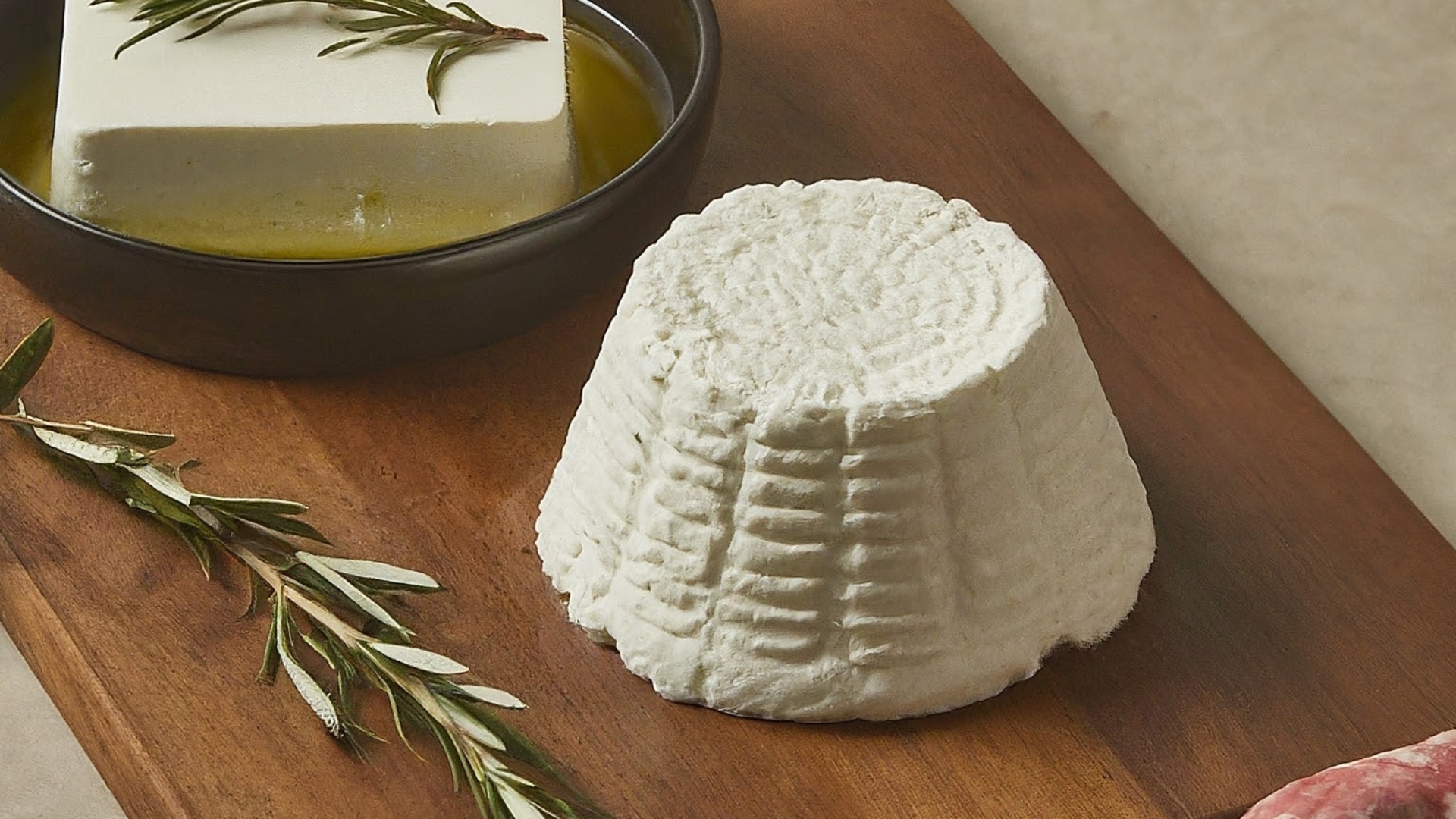
Two popular types of cheese that are often compared are feta and ricotta. Both are delicious and popular for their features and taste.
Texture, flavor, and other differences between Feta and Ricotta will help you understand their similarities.
The differences between these two are: Feta and ricotta are distinct cheeses. Feta is crumbly, tangy, and made from sheep or goat’s milk.
Ricotta is soft, mild, and made from cow’s milk. The two kinds of cheese differ in texture, taste, and milk source.
Besides these differences, there are some similarities, too. In this discussion, we will discuss both similarities and differences between these two cheeses.
So, without any delay, let’s start the discussion.
An Overview
Feta and ricotta are popular cheese types, but their similarities and dissimilarities are not discussed. But before that, we will see a head-to-head table of these two types of cheese.
| Feta | Ricotta | |
| Origin | Greece | Italy |
| Texture | Crumbly and grainy | Soft and smooth |
| Flavor | Salty and tangy | Mild and slightly sweet |
| Milk | Sheep, goat, or cow | Cow, sheep, or buffalo |
| Uses | Salads, sandwiches, pizza, pasta | Lasagna, ravioli, cannoli |
Feta vs Ricotta: Detail Differences
Understanding the difference between feta and ricotta is all you need to enjoy eating them. However, here we highlight the main differences between feta and ricotta:
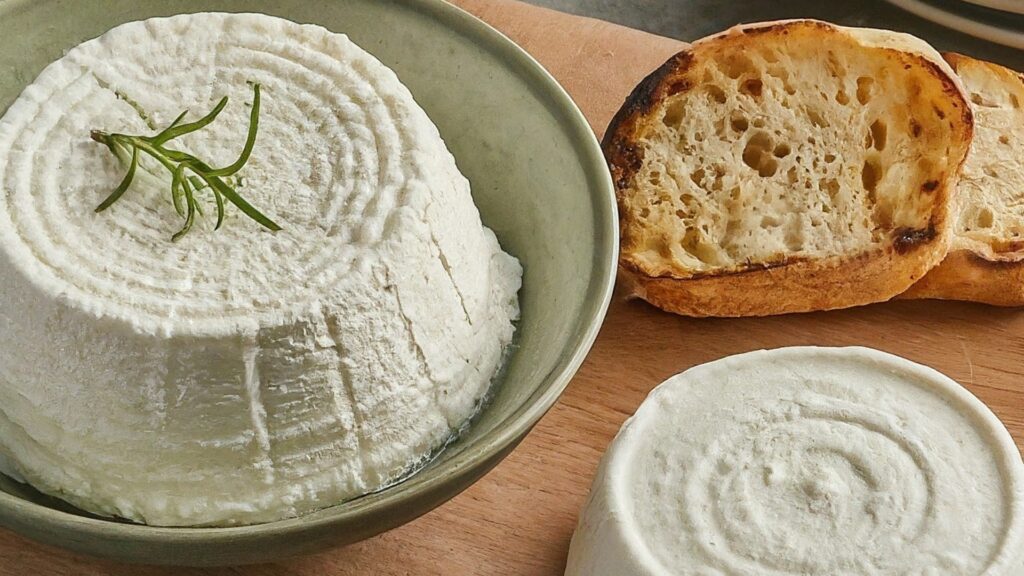
Origin and History
Feta cheese is thought to have originated thousands of years ago in Greece. It can be made from just sheep’s milk or a combination of sheep’s and goat’s milk.
From the beginning, it is preserved in brine and tasted salty, keeping its tradition.
This cheese is a protected designation of origin (PDO) product in Greece. PDO means that only cheese produced in certain regions of Greece according to certain methods can be called “feta”.
Meanwhile, ricotta is a medieval cheese that originated in Italy. It is mainly made from cow’s milk, but for different versions, many also make it from sheep’s milk or goat’s milk.
“Ricotta” is an Italian word meaning “to recover,” referring to heating the ash left over from cheese production until the protein coagulates and forms a curd.
Texture and Appearance
The texture of feta cheese is crumbly and grainy. That’s why it’s good to use crumbled on a salad or pizza. Because feta cheese is preserved in brine, its preparation process leaves it a bit dry and chalky in the mouth when eaten.
Feta cheese is usually white, although it can have a slight yellow tint depending on the type of milk used.
In contrast, ricotta cheese has a soft and creamy texture, so you can use it as a spread or filling. It also looks white and has a slightly sweet smell. Like feta, ricotta is not aged and does not have holes.
Flavor
Feta cheese gets a tangy and salty flavor from being preserved in a brine solution. It has a strong flavor with a slightly spicy aroma that can be overpowering if used excessively. To some, it tastes sour or vinegary.
Meanwhile, ricotta cheese has a mild and slightly sweet taste, similar to cottage cheese. It has a creamy and slightly grainy texture.
The subtle flavor of ricotta cheese makes it ideal for sweet and savory dishes.
Milk
Milk is the main raw material of cheese production. Feta cheese has been made from only sheep’s milk or a combination of sheep’s and goat’s milk since its inception.
However, it can be made from cow’s milk or a combination of different types of milk to vary its taste. Of course, the flavor and texture of the cheese will depend on the type of milk used.
In contrast, ricotta cheese is made from cow’s milk. Similarly, it can be made from sheep or goat’s milk to change the taste.
It is made by heating leftovers from cheese production, so it has a different texture than other cheeses made from milk curds.
Uses
Some foods that include feta cheese are Greek salads, sandwiches, pizza, and pasta. You can also use it as a dip and spread, plus enjoy it with olives, tomatoes, and cucumbers.
Italian ricotta cheese is primarily used to fill Italian dishes such as lasagna, ravioli, and cannoli. It is also used in sweet dishes such as cheesecake, pancakes, and muffins.
Due to its mild flavor and creamy texture can be used as a substitute for other soft cheeses like cottage cheese or cream cheese.
Similarities Between Feta and Ricotta
While feta and ricotta cheese differ, they also have several similarities. For example-
- Nutritional value: Both feta and ricotta provide plenty of protein, calcium, and vitamin B12.
- Shelf life: Both feta and ricotta have a relatively short shelf life and will taste best if eaten within a few days of opening.
- Versatility: Both feta and ricotta can be used in various dishes, making them versatile ingredients in the kitchen.
Feta vs Ricotta: Which One is Good for Which Recipe?
In this discussion, this is the heart of everything. Though Feta and ricotta are versatile cheeses, they have distinct textures and flavors that make them better suited for different recipes.
Here’s my breakdown of which cheese is good for which recipe.
Feta Cheese Is Good For
Feta cheese is a crumbly, salty, and tangy cheese that works well in various dishes:
- Salads: Feta is a classic choice for salads due to its salty and tangy flavor. It pairs well with ingredients like tomatoes, cucumbers, olives, and greens. Greek salads often feature feta.
- Pastries: Feta can be used in savory pastries like spanakopita (spinach and cheese pie) or börek. Its crumbly texture adds a nice contrast to the flaky pastry crust.
- Sandwiches and Wraps: Crumbled feta can be a great addition to sandwiches, wraps, or pitas. It adds a burst of flavor and creaminess.
- Pizza: Feta can be used as a pizza topping, especially with other Mediterranean-inspired ingredients like olives, sun-dried tomatoes, and spinach.
- Grilled Vegetables: Sprinkling crumbled feta over grilled vegetables adds a rich and tangy element to the dish.
- Pasta: Feta can be used in pasta dishes with Mediterranean or Greek flavors. Its saltiness can help enhance the overall flavor of the dish.
Ricotta Cheese Is Good For
Ricotta cheese is a creamy, mild, and slightly sweet cheese that’s often used in both sweet and savory dishes:
- Lasagna and Pasta: Ricotta is a classic ingredient in lasagna, stuffed pasta shells, and other pasta dishes. Its creamy texture works well in layering with pasta and sauces.
- Cannoli and Desserts: Ricotta cheese, whose creamy texture adds richness, is commonly used in desserts like cannoli. It can also be used in cheesecakes, tarts, and other sweet treats.
- Stuffed Pastries: Ricotta is often used to fill stuffed pastries like calzones or turnovers, whose creamy texture complements other fillings.
- Pancakes and Waffles: Adding ricotta to pancake or waffle batter can create a fluffier and creamier texture.
- Dips and Spreads: Ricotta can be blended with herbs, spices, or roasted vegetables to create flavorful dips and spreads for crackers, bread, or vegetables.
- Ravioli and Gnudi: Ricotta-filled ravioli or gnudi (ricotta dumplings) are delicate and delicious pasta options.
FAQs
Here are some questions people ask about these two kinds of cheese that we collect for you to get more info. So, let’s see them.
Can Feta Be Substituted With Ricotta in Recipes?
Yes, some recipes can use ricotta as a substitute for feta. But one thing to remember is that the texture and taste will be different.
Is Feta Healthier Than Ricotta?
Both feta and ricotta are much better regarding health benefits as both are relatively low in calories and protein. Feta is high in fat and sodium, and ricotta is high in calcium and vitamin A.
Can You Freeze Feta and Ricotta?
If you freeze feta cheese, it may lose some of its texture and flavor. You can freeze ricotta similarly, but thawing can make it grainy.
Can You Cook With Feta and Ricotta?
Yes, feta and ricotta can be used in various cooked dishes, including pasta, casseroles, and baked goods.
Can Lactose-intolerant People Eat Feta and Ricotta?
Both feta and ricotta are relatively low in lactose. Therefore, many people with lactose intolerance can tolerate small amounts. However, it is always best to consult a healthcare provider before use.
Conclusion
Finally, feta and ricotta are two distinct types of cheese with different origins, textures, flavors, and uses. But there are some similarities between them.
The similarities are nutritional value, shelf life, and versatility, and they are unique. We discussed all of the above.
Hope you can conclude in a better position after reading this discussion. There are some more discussions on different cheeses and their comparison.
You may read them, too. That was all for today. Thanks for reading from us.

